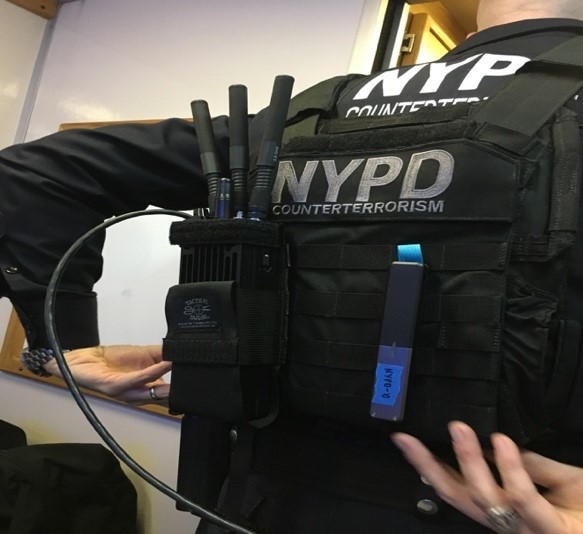
August 3, 2017
Snapshot: S&T Works with NYPD to Test Communication Systems for Public Safety Use
FRG evaluated the Mobile Ad-hoc Networking (MANET) system, a communications system originally developed for military use, and an Android Tactical Awareness Kit (ATAK) to determine if they could improve communications and public safety situational awareness. FRG conducted a field test in collaboration with the New York City Police Department’s (NYPD’s) Emergency Service Unit (ESU) and with technical assistance from S&T’s partners Johns Hopkins University Applied Physics Laboratory (JHU/APL) and Persistent Systems. Earlier MANET systems proved to be effective to address mission-based communication needs for the U.S. military and other DHS components, such as the U.S. Border Patrol. DHS S&T is exploring this capability with the NYPD to overcome such factors as wireless coverage deadspots and service congestion associated with existing network infrastructures.
“Ensuring our public safety agencies have the necessary technologies to share interoperable voice, data and video during an emergency remains a top priortity for the Department of Homeland Security,” said Cuong Luu, S&T program manager for the MANET project. “By testing systems in operational environments, we can observe how equipment supports the mission-specific needs of local law enforcement agencies, and help determine its communication range capabilities for supporting voice, video, and geographic location capabilities in a complex urban environment.”
The main component of the MANET system, the Persistent Systems’ MPU5 Smart Radio (MPU5), can be used to transmit data, video and voice communications between several radio nodes and can augment land mobile radio (LMR) communications and cell phone networks as necessary. It can also be used with various accessories, including antennas and can withstand extreme temperatures, as well as water immersion, shock and salt fog.
The ATAK is an Android application developed by the Air Force Research Lab which shows the geographic location of all MPU5 nodes on the network and provides text, chat, video, and picture sharing capabilities on a moving map display.
The field test took place at two venues in New York’s Times Square: the Marriott Marquis Times Square and the Times Square subway station. The NYPD ESU participants currently use an LMR network with one city-wide repeater frequency and three point-to-point frequencies with limited encryptiomechanisms available. These frequencies only allow for voice communications. With responders walking through a realistic scenario for the field test, they evaluated the MANET system’s ability to enhance their situational awareness by providing location and real-time video streams in addition to voice.
The feedback during the field test was largely positive. Participants appreciated the software tool’s ability to provide video streaming and live location updates of each personnel. The tool augmented voice communications since the team could see locations on a map, along with a live video stream from the team lead.
“Having the ability at the mobile command vehicle to view a live video feed improves our sitational awareness because the video can augment our voice communications.” said Detective John McKenna of NYPD ESU.
These types of field tests also allow responders to provide input into improvements and modifications to allow the equipment to meet specific mission-based needs. For example, since the MANET system requires several radios to comprise a “mesh” network with multiple radios serving as relay nodes, and it is not feasible for NYPD personnel to carry radios for the sole purpose of serving as relay nodes, participants suggested a possibility of using drop boxes (i.e., pelican cases with radios pre-loaded) as the relay points.
S&T will be publishing an after action report in the coming months summarizing the field test details, findings, and lessons learned. For more information on this or other field tests, please contact First.Responder@hq.dhs.gov.
Source: Department of Homeland Security
